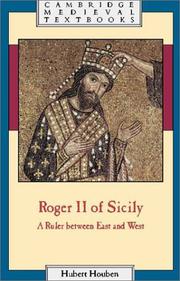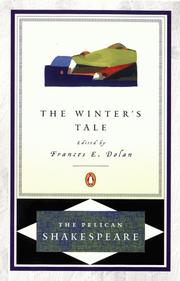| Listing 1 - 10 of 66 | << page >> |
Sort by
|
Book
ISBN: 0701124636 9780701124632 Year: 1979 Publisher: London Chatto and Windus
Abstract | Keywords | Export | Availability | Bookmark
 Loading...
Loading...Choose an application
- Reference Manager
- EndNote
- RefWorks (Direct export to RefWorks)
Sicily (Italy) --- History --- -History --- -Sicily (Italy) --- -Regione siciliana (Italy) --- Sikelia (Italy) --- Sycylia (Italy) --- Królestwo Sycylii (Italy) --- Sicilia (Italy) --- Sicile (Italy) --- Sicilian Regional Government --- Sicily --- Ṣiqillīyah (Italy) --- Sitsilyah (Italy) --- Sicily (Italy) - History - To 800.

ISBN: 1461905281 9781461905288 1881901084 9781881901082 Year: 1995 Publisher: Brooklyn, NY, USA : Legas,
Abstract | Keywords | Export | Availability | Bookmark
 Loading...
Loading...Choose an application
- Reference Manager
- EndNote
- RefWorks (Direct export to RefWorks)
Italians --- Ethnology --- Sicily (Italy) --- Regione siciliana (Italy) --- Sikelia (Italy) --- Sycylia (Italy) --- Królestwo Sycylii (Italy) --- Sicilia (Italy) --- Sicile (Italy) --- Sicilian Regional Government --- Sicily --- Ṣiqillīyah (Italy) --- Sitsilyah (Italy) --- Sicily (Italy : Territory under Allied occupation, 1943-1947) --- Naples (Kingdom)

ISBN: 8876890343 Year: 1988 Volume: I, 12 7
Abstract | Keywords | Export | Availability | Bookmark
 Loading...
Loading...Choose an application
- Reference Manager
- EndNote
- RefWorks (Direct export to RefWorks)
Sicily (Italy) --- -Sicily (Italy) --- -History --- -Sources --- History --- Sources. --- Regione siciliana (Italy) --- Sikelia (Italy) --- Sycylia (Italy) --- Królestwo Sycylii (Italy) --- Sicilia (Italy) --- Sicile (Italy) --- Sicilian Regional Government --- Sicily --- Ṣiqillīyah (Italy) --- Sitsilyah (Italy) --- Sicily (Italy : Territory under Allied occupation, 1943-1947) --- Naples (Kingdom) --- To 800

ISBN: 0521652081 0521655730 Year: 2002 Publisher: Cambridge Cambridge University press
Abstract | Keywords | Export | Availability | Bookmark
 Loading...
Loading...Choose an application
- Reference Manager
- EndNote
- RefWorks (Direct export to RefWorks)
Roger --- Sicily (Italy) --- Sicile (Italie) --- Kings and rulers --- Biography. --- History --- Rois et souverains --- Biographies --- Histoire --- Ruggero --- Ruggiero --- Regione siciliana (Italy) --- Sikelia (Italy) --- Sycylia (Italy) --- Królestwo Sycylii (Italy) --- Sicilia (Italy) --- Sicile (Italy) --- Sicilian Regional Government --- Sicily --- Ṣiqillīyah (Italy) --- Sitsilyah (Italy) --- Sicily (Italy : Territory under Allied occupation, 1943-1947) --- Naples (Kingdom)
Book
ISBN: 0853071020 9780853071020 Year: 1972 Publisher: London Johnson
Abstract | Keywords | Export | Availability | Bookmark
 Loading...
Loading...Choose an application
- Reference Manager
- EndNote
- RefWorks (Direct export to RefWorks)
Sicily (Italy) --- Tours --- Antiquities --- -Sicily (Italy) --- -Antiquities --- Regione siciliana (Italy) --- Sikelia (Italy) --- Sycylia (Italy) --- Królestwo Sycylii (Italy) --- Sicilia (Italy) --- Sicile (Italy) --- Sicilian Regional Government --- Sicily --- Ṣiqillīyah (Italy) --- Sitsilyah (Italy) --- Sicily (Italy : Territory under Allied occupation, 1943-1947) --- Naples (Kingdom) --- Antiquities. --- Tours. --- Sicily (Italy) - Tours --- Sicily (Italy) - Antiquities
Book
ISBN: 8882680037 Year: 1999 Publisher: Messina Università degli studi di Messina. Dipartimento di scienze dell'Antichità
Abstract | Keywords | Export | Availability | Bookmark
 Loading...
Loading...Choose an application
- Reference Manager
- EndNote
- RefWorks (Direct export to RefWorks)
Magna Graecia (Italy) --- Sicily (Italy) --- Magna Grecia (Italy) --- Greece --- Regione siciliana (Italy) --- Sikelia (Italy) --- Sycylia (Italy) --- Królestwo Sycylii (Italy) --- Sicilia (Italy) --- Sicile (Italy) --- Sicilian Regional Government --- Sicily --- Ṣiqillīyah (Italy) --- Sitsilyah (Italy) --- Sicily (Italy : Territory under Allied occupation, 1943-1947) --- Naples (Kingdom) --- Antiquities --- Civilization --- Colonies
Book
ISBN: 0405114354 Year: 1979 Publisher: New York (N.Y.): Arno Press
Abstract | Keywords | Export | Availability | Bookmark
 Loading...
Loading...Choose an application
- Reference Manager
- EndNote
- RefWorks (Direct export to RefWorks)
Greece --- Sicily (Italy) --- -Sicily (Italy) --- -History --- -Kings and rulers --- -Biography --- Dion, --- Dione, --- Regione siciliana (Italy) --- Sikelia (Italy) --- Sycylia (Italy) --- Królestwo Sycylii (Italy) --- Sicilia (Italy) --- Sicile (Italy) --- Sicilian Regional Government --- Sicily --- Ṣiqillīyah (Italy) --- Sitsilyah (Italy) --- Sicily (Italy : Territory under Allied occupation, 1943-1947) --- Naples (Kingdom) --- History --- Kings and rulers
Book
ISBN: 1501712586 1501712594 9781501712593 9781501712586 9781501704642 1501704648 Year: 2017 Publisher: Ithaca, New York
Abstract | Keywords | Export | Availability | Bookmark
 Loading...
Loading...Choose an application
- Reference Manager
- EndNote
- RefWorks (Direct export to RefWorks)
Sicily is a lush and culturally rich island at the center of the Mediterranean Sea. Throughout its history, the island has been conquered and colonized by successive waves of peoples from across the Mediterranean region. In the early and central Middle Ages, the island was ruled and occupied in turn by Greek Christians, Muslims, and Latin Christians.In Where Three Worlds Met, Sarah Davis-Secord investigates Sicily's place within the religious, diplomatic, military, commercial, and intellectual networks of the Mediterranean by tracing the patterns of travel, trade, and communication among Christians (Latin and Greek), Muslims, and Jews. By looking at the island across this long expanse of time and during the periods of transition from one dominant culture to another, Davis-Secord uncovers the patterns that defined and redefined the broader Muslim-Christian encounter in the Middle Ages.Sicily was a nexus for cross-cultural communication not because of its geographical placement at the center of the Mediterranean but because of the specific roles the island played in a variety of travel and trade networks in the Mediterranean region. Complex combinations of political, cultural, and economic need transformed Sicily's patterns of connection to other nearby regions-transformations that were representative of the fundamental shifts that took place in the larger Mediterranean system during the Middle Ages. The meanings and functions of Sicily's positioning within these larger Mediterranean communications networks depended on the purposes to which the island was being put and how it functioned at the boundaries of the Greek, Latin, and Muslim worlds.
Christianity and other religions --- Islam --- Islam. --- Relations --- Christianity. --- Sicily (Italy) --- Mediterranean Region --- Regione siciliana (Italy) --- Sikelia (Italy) --- Sycylia (Italy) --- Królestwo Sycylii (Italy) --- Sicilia (Italy) --- Sicile (Italy) --- Sicilian Regional Government --- Sicily --- Ṣiqillīyah (Italy) --- Sitsilyah (Italy) --- Sicily (Italy : Territory under Allied occupation, 1943-1947) --- Naples (Kingdom) --- History --- Mohammedanism --- Muhammadanism --- Muslimism --- Mussulmanism --- Religions --- Muslims --- Relations&delete& --- Christianity --- E-books

ISBN: 1101161841 014071488X Year: 1999 Publisher: [Place of publication not identified] Penguin Books
Abstract | Keywords | Export | Availability | Bookmark
 Loading...
Loading...Choose an application
- Reference Manager
- EndNote
- RefWorks (Direct export to RefWorks)
Fathers and daughters --- Married people --- Castaways --- English --- Languages & Literatures --- English Literature --- Sicily (Italy) --- Kings and rulers --- Królestwo Sycylii (Italy) --- Regione siciliana (Italy) --- Sicile (Italy) --- Sicilia (Italy) --- Sicilian Regional Government --- Sicily --- Sikelia (Italy) --- Ṣiqillīyah (Italy) --- Sitsilyah (Italy) --- Sycylia (Italy) --- Naples (Kingdom) --- Sicily (Italy : Territory under Allied occupation, 1943-1947)
Book
ISBN: 9789004192454 900419245X 9789004196049 9004196048 9789004203617 9004203613 1283120445 9786613120441 Year: 2011 Publisher: Leiden ; Boston : Brill,
Abstract | Keywords | Export | Availability | Bookmark
 Loading...
Loading...Choose an application
- Reference Manager
- EndNote
- RefWorks (Direct export to RefWorks)
The history of the Jews in Sicily covers a period of over a thousand years, from Antiquity to the Expulsion, based on some 40,000 archival records, most of them hitherto unpublished. It illustrates the political, legal, economic, social and religious vicissitudes of the Jewish minority and its relations with the surrounding majority of Romans, Moslems and Christians. While the antecedents of the Jewish presence on the island are shrouded in mystery, more and more historical records surface with the passage of time. Those become abundant toward the later Middle Ages. At that time the Jews in Sicily were citizens and suffered from relatively few disabilities. This was true in particular in the economic sphere. No discriminatory legislation forced them into moneylending and trade in old clothes. They engaged in agriculture and industry, trade and commerce, including international trade and shipping, and in most professions, which in turn enhanced their social status. There was as an unusually large number of craftsmen and physicians among them. The majority, however, were labourers, on the land and in town. In the fifteenth century the Jewish population reached 25,000 or thereabouts, over half of contemporary Italian Jewry. All this came to a sudden end with the expulsion order issued by the Catholic Monarchs in 1492. Some 80% of the Jews went into exile, while the remainder converted to Catholicism, only to be caught in the net of the Spanish inquisition. 'This final volume of Simonsohn’s series provides readers with an excellent opportunity to obtain the gist of the scholarship in the previous volumes. Replete with tables detailing commodity prices, wages and salaries, marriage contracts, and demographics this work is an extremely informative and very readable description of the interaction between Jews and non-Jews in a not-so-closed society in the Middle Ages.' Randall C. Belinfante, Librarian/Archivist, American Sephardi Federation, New York (AJL Reviews, Nov/Dec 2011) This book is also available in paperback.
Jews --- Hebrews --- Israelites --- Jewish people --- Jewry --- Judaic people --- Judaists --- Ethnology --- Religious adherents --- Semites --- Judaism --- History --- Sicily (Italy) --- Regione siciliana (Italy) --- Sikelia (Italy) --- Sycylia (Italy) --- Królestwo Sycylii (Italy) --- Sicilia (Italy) --- Sicile (Italy) --- Sicilian Regional Government --- Sicily --- Ṣiqillīyah (Italy) --- Sitsilyah (Italy) --- Sicily (Italy : Territory under Allied occupation, 1943-1947) --- Naples (Kingdom) --- Ethnic relations.
| Listing 1 - 10 of 66 | << page >> |
Sort by
|

 Search
Search Feedback
Feedback About
About Help
Help News
News